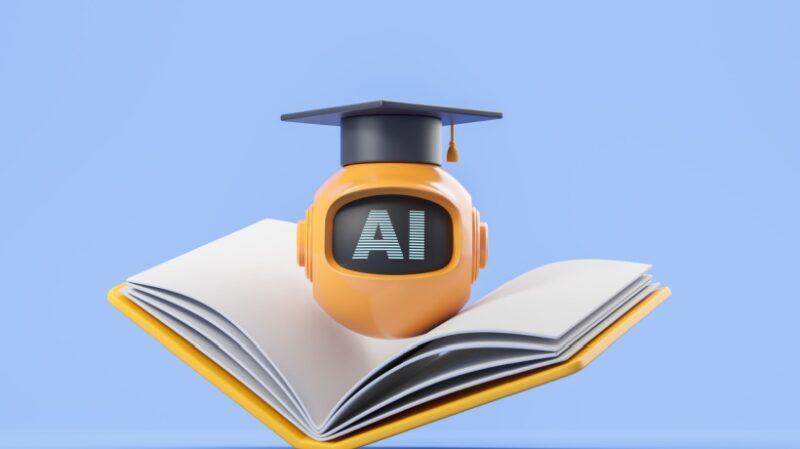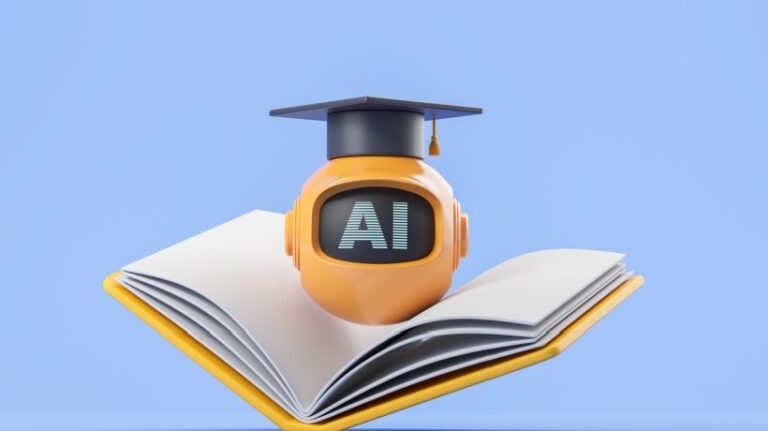
The impact of AI in higher education
Not so long ago, using artificial intelligence (AI) in universities was out of the question. But today, AI in higher education has become very common. From AI-powered research tools to smart learning platforms that are tailored to each student’s needs, major changes are occurring in the way universities work. In the academic world, AI offers new opportunities for learning, teaching, and even organizational management. Personalized learning paths, 24/7 AI student support, and smart systems that help professors identify students who may need help are just some of the ways AI can improve things for faculty and students.
The introduction of AI has become essential for universities. Because the future of higher education requires adaptability and innovation. As student expectations evolve and institutions face competition from around the world, AI offers a way to more effectively meet these needs. However, the use of AI is not about replacing human educators or dehumanizing the classroom. When used responsibly, it can enhance a professor’s work by handling repetitive tasks, allowing them to focus on teaching, teaching, and inspiring. So how exactly can universities utilize AI? This article looks at practical ways higher education institutions can take advantage of it and prepare for what comes next.
7 strategies for universities to leverage AI
1. Individualized and adaptive education
Not all students learn the same thing, but most of them know it. So it’s no wonder they aren’t taught things the same way. Some people prefer visual learning materials, while others prefer textual content. Others prefer hands-on practice. AI uses adaptive learning systems to help accommodate all your learning preferences. These allow universities to tailor the educational experience to each student’s pace, strengths, and gaps. Essentially, these platforms learn how students learn. So if someone is struggling with a concept, the system may slow them down, provide an example, or recommend additional practice. Similarly, once someone masters a subject, the platform can provide more advanced material. For example, Arizona State University uses adaptive courseware in its foundational classes with great success. [1] As a result, students, especially those with special needs, are happier and perform better.
2. Academic support using AI
Tools like chatbots and virtual educational assistants allow students to receive 24/7 academic support whenever they need it. These AI systems can also process FAQs, explain complex concepts, and quiz students to help them understand concepts and improve knowledge retention. This is especially beneficial for large classes where professors may not have time to respond to hundreds of emails. However, AI chatbots can instantly respond to questions about deadlines, projects, and exams. You can also walk students through problem solving step-by-step, building their confidence and not feeling shy about asking questions. What’s more, AI also learns on its own. Therefore, the more students use it, the smarter it becomes. One great example is Jill Watson, a virtual TA at Georgia Tech powered by IBM Watson. [2] Students in the online course had no idea they were interacting with an AI for several weeks, proving just how advanced the AI system is.
3. Automated management process
The job of a university administrator can be difficult. University staff have a lot to do, including managing admissions procedures, responding to student questions, organizing course schedules, and processing financial documents. Thankfully, another way AI can help higher education is by handling all of these administrative processes. As mentioned earlier, many universities are now leveraging AI-powered chatbots to respond to day-to-day inquiries from students. But that’s not all. AI is being used to automate the review of applications, schedule appointments with advisors, and even spot errors in registration forms. This reduces human error and saves valuable time. Of course, this does not mean replacing living humans with robots. In fact, this allows faculty and administrative staff to focus on more meaningful tasks. For example, during periods of high enrollment, universities can use AI to sort and categorize thousands of applications based on criteria. The result is happier students, happier employees, and a better-organized campus.
4. Enhanced research and data analysis
Whether you’re a student or a professor, research can be a daunting task. The good news is that AI can also be a research partner. How does it work? AI systems powered by NLP can scan and summarize large amounts of academic literature in seconds. This means that instead of spending hours finding relevant studies, researchers can spend more time reading the results. AI also helps researchers understand complex data using predictive modeling and pattern detection. For example, in climate science, AI can analyze large numbers of environmental data points to predict future events. In the social sciences, you can find hidden trends in survey responses.
5. Smart content creation
For educators, it can be difficult to continue creating new and engaging learning materials each semester. However, with the right tools, higher education institutions can use AI as a teaching assistant, helping them more effectively design and generate course content tailored to student needs. AI tools can also brainstorm quiz questions, summarize long research papers, and translate academic materials. AI is also great at organizing and recommending resources. These systems track what students are struggling with and automatically suggest articles, videos, and exercises accordingly.
6. Plagiarism Detection
Thanks to AI, it’s easier than ever for higher education students to get help with their assignments. But with that comes concerns about academic integrity. By leveraging generative AI systems, universities are now thinking about how to ensure that students can do their jobs. Thankfully, AI has a solution. Many educational institutions are now using AI-powered plagiarism detection tools like Turnitin. Turnitin is evolving to detect copy-paste and AI-generated content. These systems use advanced pattern recognition and language analysis to identify suspicious submissions, helping educators identify potential problems. AI will also help universities educate students about what plagiarism is and how to avoid it. Some tools provide real-time feedback as students write, helping them properly paraphrase and cite their work before submitting it. Of course, relying too much on AI detectors can lead to false positives, so it’s important for universities to establish clear AI usage policies to avoid false accusations.
7. Accessibility
One of the most exciting ways AI is transforming higher education is by making learning more accessible for everyone, especially students with disabilities or language barriers. There are many AI-powered tools with built-in accessibility features such as text-to-speech that can automatically transcribe lectures in real time. For hearing-impaired students, this means they no longer have to struggle to follow the conversation. And there’s also real-time translation. Many universities have international students who speak English as a second or third language. AI tools can translate lectures, subtitles, and even notes almost instantly. Don’t forget about screen readers and AI-enhanced voice assistants to support visually impaired students. These tools can read digital textbooks aloud, explain on-screen images, and help students easily navigate courses. AI is beginning to interpret sign language and convert it into text and speech in real time. [3] This is still new, but the potential to make classrooms more inclusive is huge.
conclusion
When it comes to AI in higher education, it is important to use it responsibly, with human involvement at all times. AI should be a helpful assistant, not a replacement for educators. At the end of the day, the best AI systems empower both teachers and students, giving them new ways to connect, create, and succeed. So while AI is powerful, it doesn’t create change on its own. It needs to be carefully adopted with a human-centered approach.
References:
[1] Increase student success and retention with adaptive courseware
[2] Jill Watson: Virtual Teaching Assistant for Online Education
[3] AI gives voice to sign language, empowering the deaf


